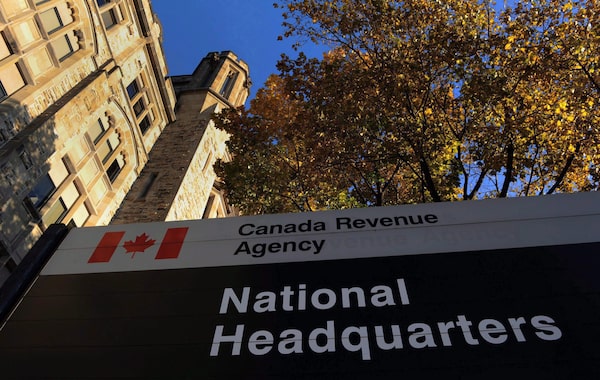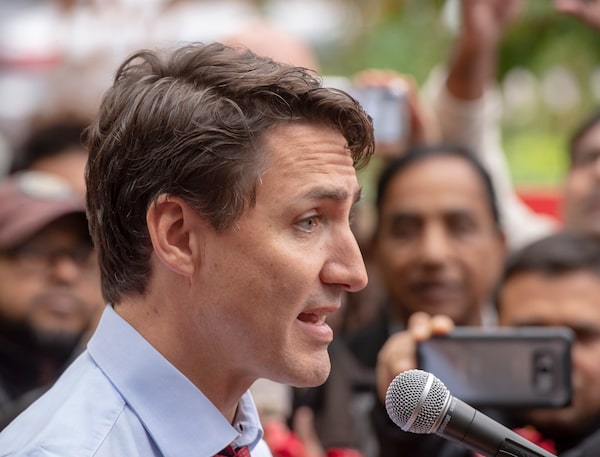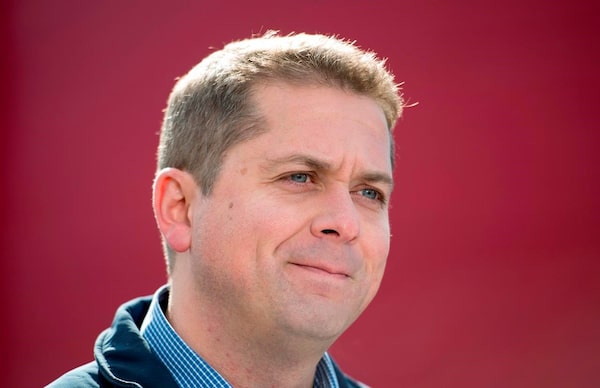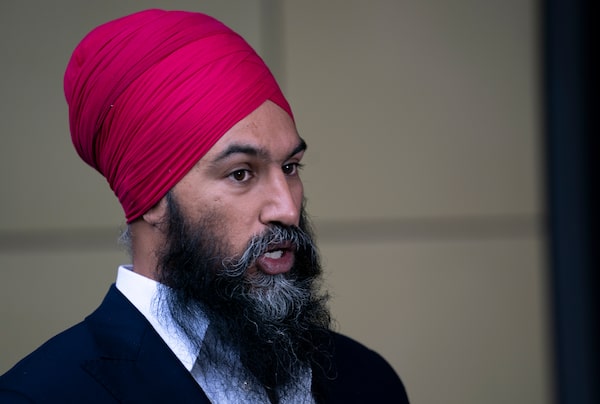Big, broad-based tax cuts are at the core of both the Liberal and Conservative campaign platforms in 2019.
Both parties are also offering voters a buffet of boutique tax breaks, which they highlight on the campaign trail in an effort to woo key slices of the electorate.
The two platforms, should either be implemented, would shave billions annually from federal revenues, raising questions as to how each party will make their numbers work.
The NDP and Greens also face questions about their numbers, but from a different perspective. They each take a pass on big tax cuts in favour of major new spending, which would be paid for in part by large tax increases using methods that are untested in Canada, such as an annual wealth tax on the country’s richest citizens.
Here, The Globe and Mail takes a closer look at where the parties stand on tax.

Canada’s federal parties are presenting their ideas on how much tax to – collect and in what ways – in order to pay for their budget priorities.Sean Kilpatrick/The Canadian Press
The context
Under Justin Trudeau’s Liberal government, Ottawa ran deficits every year. Those deficits increase the size of the federal debt, which stood at $685-billion as of the end of March.
But when federal finances are measured as a percentage of the economy, the federal debt is below the historical average, as are federal spending and tax revenues.
Based on the past 52 years for which there is public Finance Department data, the average size of federal revenues is 16.3 per cent of GDP. That figure was 15 per cent in 2018-19 and was below 15 per cent for the previous decade.
Federal program spending averaged 15.3 per cent historically and stood at 14.6 per cent in 2018-19.
The debt-to-GDP ratio has averaged 38.1 per cent over those 52 years. It now stands at 30.9 per cent, after falling from a peak of 66.8 per cent in 1994-95, which was when concern from international rating agencies over Canada’s indebtedness led to the deficit-fighting budgets of the mid-1990s. The Parliamentary Budget Office has said federal finances are currently sustainable for the long term, but provincial finances are not.
The federal government climbed out of deficit in 1997-98 when it posted its first surplus in 28 years. Ottawa then ran 11 consecutive years of surpluses, before falling back into deficit in 2008-09 at the time of a global financial crisis. Ottawa has been in the red since. (The Conservative government recorded a small surplus for 2014-15, but the Liberal government later approved an accounting change that retroactively turned that year into a small deficit.)
The Liberal plan
Broad-based tax cuts

Liberal leader Justin Trudeau campaigns in Montreal on Oct. 3, 2019.Ryan Remiorz/The Canadian Press
A Liberal government would increase the basic personal amount of income an individual can earn before paying any tax to $15,000 – up from $13,229. This will save the average family nearly $600 a year, according to the Liberals. While an increase to the basic personal amount would normally benefit all taxpayers, the Liberal promise would start to phase out this tax break for those with incomes above $150,605 and it would be fully phased out for those with income above $214,557.
Targeted tax cuts
After the broad-based tax cut, the second-largest item in the platform is a 10 per cent increase to Old Age Security payments for all seniors 75 and over. That will cost $1.6-billion in the first year, rising to $2.5-billion in the fourth year. The third-largest item is increased funding for health care, followed by more than $1-billion a year to increase the Canada Child Benefit for parents with children under the age of one, providing families with up to $1,000 more.
Some of the other specific demographics that stand to benefit from Liberal platform pledges include first-time homebuyers in Canada’s largest cities, campers and Canadians looking to buy a used electric vehicle.
Revenue source
The four-year Liberal platform adds up to $56.9-billion in new spending and tax cuts. To pay for this, the platform identifies $25.4-billion in new revenue, including an internal spending review and tax increases aimed at large companies and high-wealth individuals through a new tax on luxury items priced over $100,000.
The $31.5-billion shortfall between those two numbers would mean larger deficits over that period than previously projected. The Liberal platform offers no timeline for balancing the books. Instead, the party says the federal debt-to-GDP is already low at 30.9 per cent of GDP and the platform pledges would keep that ratio on a slight downward trend.
The issues
Economists generally agree that small deficits are not a major concern. Yet allowing the deficit to reach as high as $27-billion when the economy is relatively healthy raises questions as to what a Liberal government would do if – as many expect – the global economy soon takes a turn for the worse.
Independent costing of some Liberal promises by the Parliamentary Budget Officer also point to vulnerabilities in the party’s numbers. For instance, the PBO says there is little doubt that the proposed broad-based tax cut would reduce federal revenues by over $5-billion a year.
Yet the PBO notes there is a high degree of uncertainty as to whether some of the party’s revenue-raising plans will produce the extra money the party expects.
Former PBO Kevin Page and his team at the University of Ottawa’s Institute of Fiscal Studies and Democracy are reviewing all costed platforms based on whether they demonstrate reasonable fiscal management and economic assumptions. The IFSD rated the Liberal platform with an overall score of “good.”
However, former Finance Department officials Peter DeVries and Scott Clark reviewed the Liberal platform and found several instances that appear to underestimate spending or overestimate savings. As a result, they conclude the party’s pledge to reduce the debt-to-GDP ratio is not credible.
“The debt ratio is heading north, not south,” Mr. Clark told The Globe.
The Conservative plan

Conservative leader Andrew Scheer at a campaign event in Upper Kingsclear, N.B., on Oct. 3, 2019.The Canadian Press
Broad-based tax cuts
Calling it the “universal tax cut,” a Conservative government would reduce the rate on income earned below $47,630 from 15 per cent to 13.75 per cent. This would save an average two-income family more than $850 a year, according to the party.
The tax cut is similar in size to the one proposed by the Liberal Party. In 2024-25, the Conservative tax cut is slightly more generous and would lower federal revenues by $6.1-billion. The Liberal party’s tax cut would cost $5.8-billion that year. There are slight differences in terms of who would benefit. The Conservative plan does not include a restriction from having the tax cut apply to high-income earners.
Targeted tax cuts
After announcing the universal tax cut early in the campaign, Conservative Leader Andrew Scheer followed that up by announcing several other targeted tax breaks. These measures include tax breaks for public-transit users, removing the GST from home-heating costs, tax breaks for parents who have children enrolled in arts and sports programs, increasing the age credit for seniors and a credit for home renovations that reduce greenhouse gas emissions.
The Conservative platform also pledges to reverse several tax changes adopted by the Liberal government that affect incorporated small businesses. The Conservatives would lower taxes for business owners who have over $1-million in passive investments – such as stocks and bonds – that are not related to the business.
Revenue source
The Conservative Party says it can implement all of these tax cuts while still balancing the budget within five years. The party did not release its costed platform until Friday Oct. 11, the day after the final leaders’ debate and the same day that advance polls opened.
The platform outlined $53-billion in spending reductions over five years, as well as a plan to raise $11-billion over that time through stronger tax enforcement by the Canada Revenue Agency.
The biggest spending cut in the platform – $18-billion over five years – is in the form of delayed infrastructure spending, something that Mr. Scheer never mentioned previously during the campaign. The party said the existing plan to spend $187-billion on infrastructure over 12 years would instead be spent over 15 years.
After infrastructure, the second-largest source of savings in the Conservative Party platform is a $14-billion reduction over five years on federal government operating expenses. The platform does not provide details, but the party suggested that possible measures could include freezing government staffing levels, shrinking work space for civil servants and reducing the amount spent by departments on outside consultants.
The issues
University of Calgary economist and tax expert Jack Mintz reviewed the Conservative platform for the party in advance and judged it a “reasonable” plan for bringing the federal books back to balance.
In an interview, he said the Conservatives’ across-the-board tax cut is better tax policy than the Liberal one. While the impact of the Liberal tax cut is fully realized once an individual’s income climbs above $15,000, the Conservative tax cut provides an incentive for people to work more and pay less tax right up to $47,630, which he said is good for productivity.
He also said allowing higher income earners to also benefit from the Conservative tax cut helps address concerns that Canada’s high taxes make it harder for businesses to attract top talent. However, Mr. Mintz said he’s no fan of targeted tax credits from any party.
“I don’t like any boutique tax credits, so I don’t like the Conservatives’ arts-and-sports one and I don’t like the camping one that the Liberals have,” he said.
Numerous government and academic reports have questioned the effectiveness of tax credits in areas such as fitness programs or public transit in terms of encouraging changes in behaviour.
The University of Ottawa’s Institute for Fiscal Studies and Democracy awarded the plan an overall “pass.” It also awarded the plan a ranking of “good” for responsible fiscal management because it included a medium-term target to balance the budget.
The institute noted that the planned spending reductions in direct program spending are significant, which creates risks that service levels could be affected.
Under the category of transparency, the institute awarded the Conservatives a “pass” grade for releasing PBO costing documents at the time that campaign announcements were made. However it criticized the party for releasing its platform late in the campaign.
The NDP received a “fail” mark for transparency for also releasing its costed platform after the leaders debate, but the institute’s ranking for the NDP included other factors.
The NDP plan
No broad-based tax cuts

NDP leader Jagmeet Singh on the campaign trail in Toronto on Oct. 3, 2019.Paul Chiasson/The Canadian Press
Promising “a new deal for tax fairness,” the NDP says the “false tax cuts” promised by the Liberals and Conservatives will lead to service cuts that force people to pay more and receive less. The NDP campaign rejects tax cuts and advocates for tax increases, including a three-percentage-point hike to the corporate tax rate, raising taxes on capital gains, increasing the top marginal tax rate and imposing a 1 per cent tax on wealth over $20-million. The party has released a 109-page platform, but it did not include a breakdown of how much each promise would cost or how the platform would affect Ottawa’s bottom line.
Targeted tax credits
The NDP promises some targeted tax breaks, including doubling the Home Buyers Tax Credit to $1,500, creating a new tax credit that encourages postsecondary graduates to work in rural northern communities, and increasing the value of the Caregiver Tax Credit and the Volunteer Firefighters Tax Credit.
Revenue source
Like the Conservatives, the NDP waited until Friday, Oct. 11 before releasing a detailed cost-breakdown of its campaign promises.
That document revealed that the party proposes to raise $130-billion in new revenue over four years from a range of tax hikes on corporations and high-income Canadians. The party also proposes to close offshore tax loopholes.
One major source of proposed new revenue is a wealth tax. The PBO has reviewed this proposal and estimates it would raise over $6-billion a year in revenue by 2022, growing to nearly $10-billion a year by the end of the decade.
However, the PBO cautioned that its revenue estimate has “high uncertainty” because a large behavioural response is expected, meaning high-wealth individuals would take accounting measures to avoid their exposure to the tax.
The issues
The University of Ottawa’s Institute for Fiscal Studies and Democracy awarded the NDP platform an overall grade of “pass,” but said the party deserves a “fail” for transparency.
The rationale for the fail ranking includes the fact that the party waited until after the leaders’ debate to release its financial details. The institute also notes that over 90 per cent of the revenue-raising measures in the platform were judged by the PBO to have a high degree of uncertainty.
The NDP does attempt to address this in the platform by including a contingency fund of $20-billion over five years to cover the possibility that revenue projections fall short.
Further, while the idea of a wealth tax is championed by some, the policy has a poor track record internationally.
A 2018 article published by the International Monetary Fund noted the number of OECD countries with an active wealth tax fell to four from 12 between 1985 and 2007. The authors noted wealth taxes are of “limited effectiveness” because they are prone to lobbying and exemptions.
“Furthermore, the rich have proved adept avoiding or evading taxes by placing their wealth abroad in low tax jurisdictions,” they noted.
The Green Party plan
No broad-based tax cuts
The Green Party platform does not propose any changes to personal tax rates.
Corporate taxes
The Green Party would increase the corporate tax rate from 15 per cent to 21 per cent, which it says would raise more than $14-billion a year. The party also proposes a surtax on bank profits.
Targeted tax credits
The Green Party would enrich the tax credit for volunteer firefighters and create a tax credit for renovating heritage buildings. Various education-related tax credits, including RESPs, would be replaced with a program of free postsecondary tuition.
Revenue source
Green Party leader Elizabeth May campaigns in Victoria on Oct. 3, 2019.CHAD HIPOLITO/The Canadian Press
The Green Party’s costed platform proposes an immediate and dramatic increase in government spending and taxation. In the first year, the party proposes a 21.5 per cent increase in federal spending, a $74-billion hike. Tax revenues would increase by about the same amount by the third year of the platform.
Some of the platform’s largest tax hikes include raising the corporate tax rate from 15 per cent to 21 per cent, applying tax to 100 per cent of capital gains – up from 50 per cent; a 0.5 per cent tax on financial transactions; and a 1 per cent tax on net wealth above $20-million.
In its analysis, the PBO cautioned the expected revenue from some of the tax increases are highly uncertain, in part because the ideas fall out of the mainstream of public economics. For instance, the PBO noted the plan to raise over $15-billion a year from a financial transactions tax “has not been tried in an open economy before.”
The issues
The Green Party acknowledges its platform, if implemented, would have a dramatic negative effect on Canada’s resource-based economy. The platform predicts companies that own fossil fuel assets will need to rapidly “write them down to near-zero values. … This will have immediate effects on the overall values of many Canadian institutional investors and banks, and on the balance sheets and income statements of provincial governments.”
The University of Ottawa’s Institute of Fiscal Studies and Democracy released a critical review of the Green platform. In a written report, the IFSD gave the platform an overall assessment of “fail,” for lacking realistic economic and fiscal assumptions and for not displaying responsible fiscal management.
The Green Party then released a revised costing document, which the IFSD reassessed with an overall grade of “pass,” though it continued to mark the platform as a fail in terms of responsible fiscal management.
More explainers
Canadian federal election guide: What you need to know before Oct. 21
Climate policy: Where the four main parties stand
Immigration and asylum seekers: Where the four main parties stand
Pharmacare: What the main federal parties are promising
Where the parties stand on housing reform, and the risks of their pledges
 Bill Curry
Bill Curry